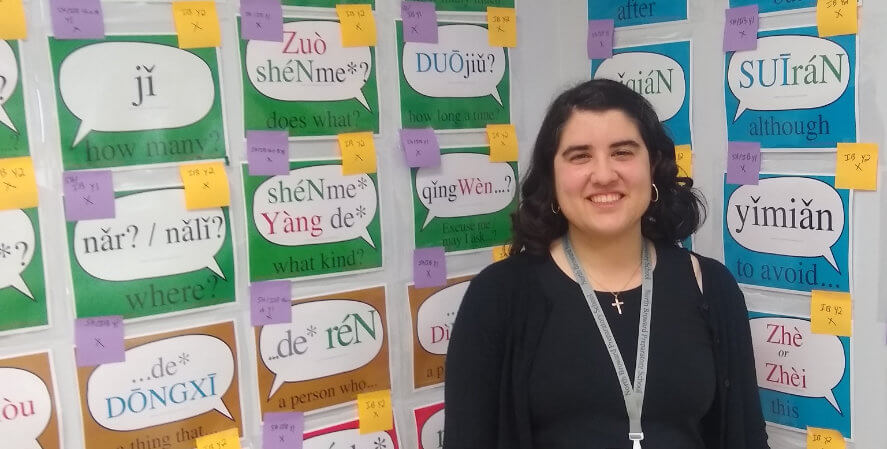We use cookies to improve your online experiences. To learn more and choose your cookies options, please refer to our cookie policy.

By Gina Elia, High School Mandarin teacher at North Broward Preparatory School.
We all know that studying a second language at school can be difficult for children, and this is often compounded by the fact that many students are not able to practice speaking or listening outside of the classroom as much as they should. In fact, many parents love supporting their children as they do their homework across their subjects but struggle to think of ways to help when it comes to world language skills, especially if they don’t speak the language in question.
As a Chinese teacher at North Broward Preparatory School in South Florida – which does not have a large Asian-American population – I noticed that many of my students’ families face this same situation. The biggest issue holding them back is that they don’t use the language outside of the few hours a week we meet together. Because they don’t use the language, they don’t internalize the vocabulary, and this traps them in the rut of having to ask me how to say every other word even though they’ve studied them before.
In response to this tricky situation, I’ve developed a list of top tips over the years that parents can use to ensure their children are developing their world language skills, no matter their own experience with the language in question.
Here are my ideas for helping them use the language in fun and interesting ways, which I hope will hardly feel like work.
Help your children review vocabulary flashcards using Quizlet, a great online flashcard tool. You don’t need to know the language to be able to tell from the flashcards if their answer is correct or not. If they’re studying a language with a writing system that you cannot read, ask them to include the transliteration of the word on the flashcard into your own language so you can check for accuracy. They will usually be required to do this anyway, and it’s integral to their internalizing how to pronounce vocabulary written in languages with writing systems that are different from their mother tongue.
Check in periodically on your child’s understanding of basic grammar terms (nouns, verbs, adjectives, adverbs, subjects, objects). These parts of speech are common to all languages, and children will have an easier time in their world language classes if they at least understand all the basic parts of speech and how they relate to each other.
Help them sign up for a Duolingo account (totally free!), which is a language-learning app that takes users through fun bite-sized lessons designed like games. For some languages, like French and Spanish, you can even read short stories scaffolded according to level or listen to podcasts. Encourage your children to spend 15 minutes a day completing the gamified lessons in the language they are studying.
The internet is full of great resources for finding movies, TV shows, short stories, novels, articles, and other resources in world languages. However, it can be overwhelming to Google these and know what is truly going to make a difference. I would recommend the website Open Culture, which has an extensive collection of excellent materials for world language students.
Likewise, your local library most likely has a selection of books and/or audiovisual materials in a second language that your children can use, with or without subtitles depending on their level. If your library lacks such resources, try a bookstore or Amazon.
Encourage children to find extra opportunities to practice speaking, such as community events and clubs at school. An online language partner can also be a good option as long as it is done safely and securely. Never exchange any personal information with anyone online. Italki is a popular free site used for this purpose. Another option is Verbling, where you can pay for online tutors in your language of choice.